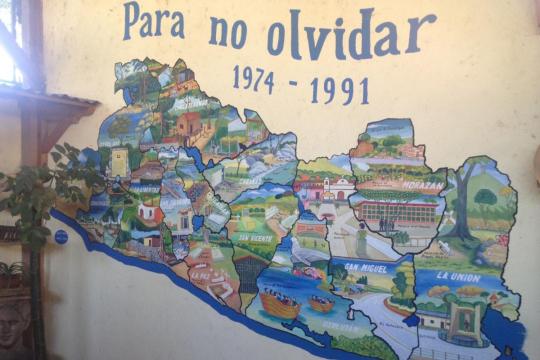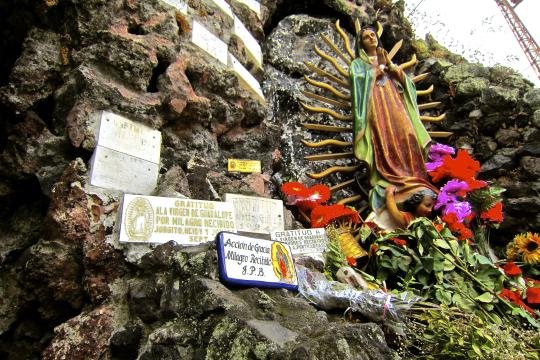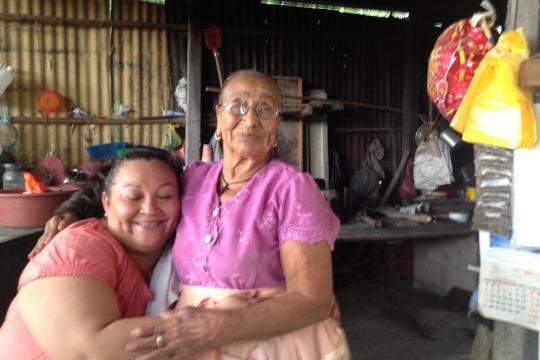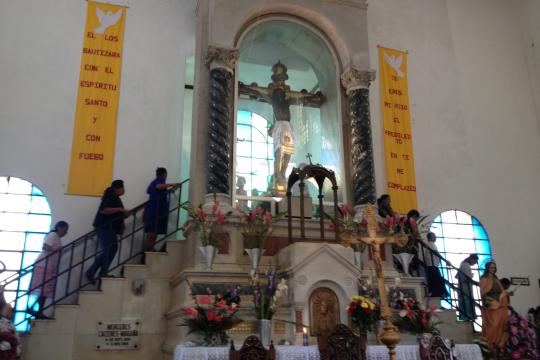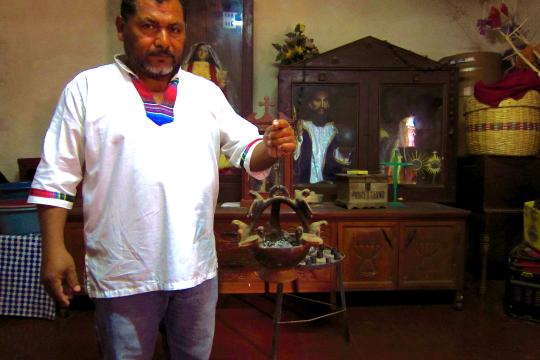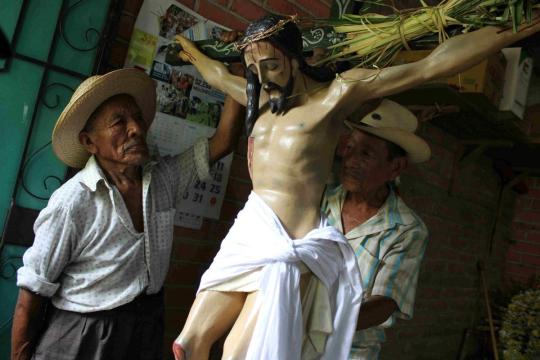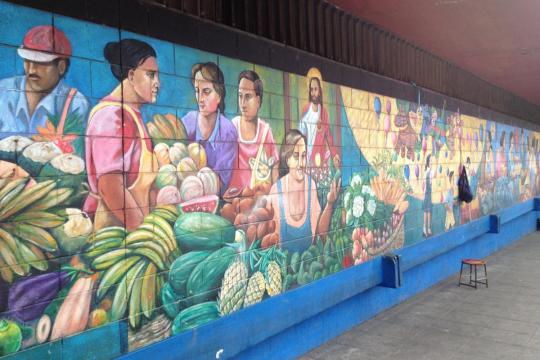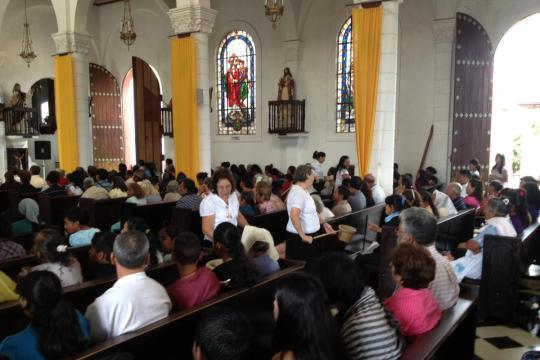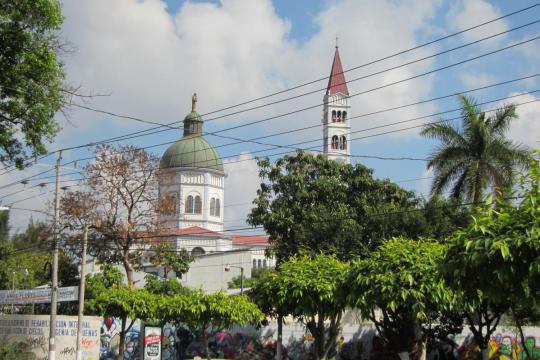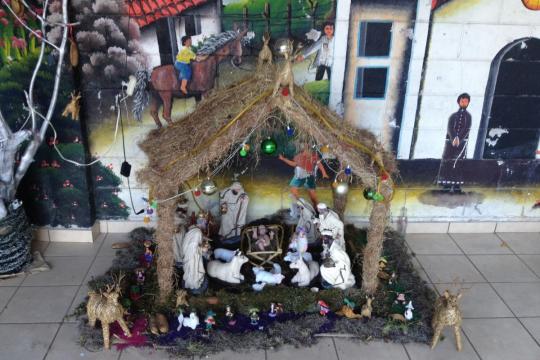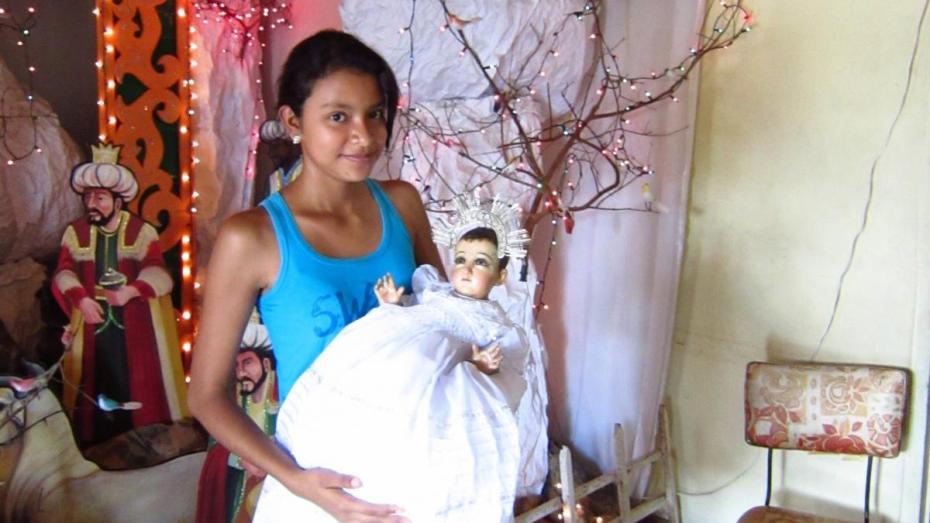
El Salvador is commonly thought of as a Catholic country, though today many surveys put the proportion of Catholics at half or less of the population. The name of the country, and of a great many of its towns, reflects that Catholic heritage, with saints’ names being especially popular. Catholicism is on display throughout El Salvador in the form of murals, bumper stickers, rosaries in cars, and crèche scenes. In Western El Salvador, a remarkable range and variety of cofradías, or lay confraternities, help define Catholic life. Each cofradía serves as custodian of a number of religious statues throughout the year, and sponsors at least one annual feast.The feasts often feature special foods and drinks, music, dancing and fireworks.
Salvadoran Catholicism can often value remembrance of martyrdom, whether in the form of traditional religious piety, or in remembrance of martyrs of the 1980s civil war, such as Archbishop Oscar Romero. A history of violence plagues the country, and El Salvador continues to struggle with one of the world's highest murder rates. Gang violence tops citizen concerns, and there is a low level of trust in other people, in government and in social institutions. As a result, the Catholic Church is the most trusted institution in El Salvador. Read more...
National Demographics
- 1 United Nations, Department of Economic and Social Affairs, Population Division, World Urbanization Prospects: The 2018 Revision, Online Edition (New York: United Nations, 2018).
- 2 United Nations, Department of Economic and Social Affairs, Population Division, International Migrant Stock 2020 (New York: United Nations, 2020).
- 3 Data as of 2021. United Nations Office on Drugs and Crime, "Intentional Homicide," United Nations, Accessed April 9, 2024; United Nations Office on Drugs and Crime, Global Study on Homicide 2023 (Vienna: United Nations, 2023).
- 4 "2023 Corruption Perceptions Index," Transparency International, Accessed April 9, 2024.
- 5 United Nations Children's Fund, The State of the World's Children 2023 (Florence: UNICEF Innocenti – Global Office of Research and Foresight, 2023).
- 6 International Telecommunication Union, "Individuals using the Internet (% of population)," The World Bank, Accessed April 24, 2024.
- 7 Poverty and Inequality Platform, "Poverty headcount ratio at $2.15 a day (2017 PPP) (% of population)," The World Bank, Accessed April 24, 2024.
- 8 World Economic Forum, Global Gender Gap Report 2023 (Geneva: World Economic Forum, 2023).
- 9 As Pew describes it, "Government restrictions on religion include laws, policies and actions that regulate and limit religious beliefs and practices. They also include policies that single out certain religious groups or ban certain practices; the granting of benefits to some religious groups but not others; and bureaucratic rules that require religious groups to register to receive benefits." As noted on pp. 45-47 of the report, the index summarizes data from 19 sources. The index does not differentiate whether the laws are directed toward Catholics. Pew Research Center, Globally, Government Restrictions on Religion Reached Peak Levels in 2021, While Social Hostilities Went Down (Pew Research Center, 2024).
- 10 As Pew describes it, "Social hostilities include actions by private individuals or groups that target religious groups; they also include actions by groups or individuals who use religion to restrict others. The SHI captures events such as religion-related harassment, mob violence, terrorism/militant activity, and hostilities over religious conversions or the wearing of religious symbols and clothing." As noted on pp. 45-47 of the report, the index summarizes data from 19 sources. The index does not differentiate whether the hostilities are directed toward Catholics. Pew Research Center, Globally, Government Restrictions on Religion Reached Peak Levels in 2021, While Social Hostilities Went Down (Pew Research Center, 2024).
Catholic Demographics
These statistics are derived from the Vatican's official publication, Statistical Yearbook of the Church 2022 (Vatican City: Librera Editrice Vaticana, 2024). The numbers may differ from data reported by other sources on this site.
